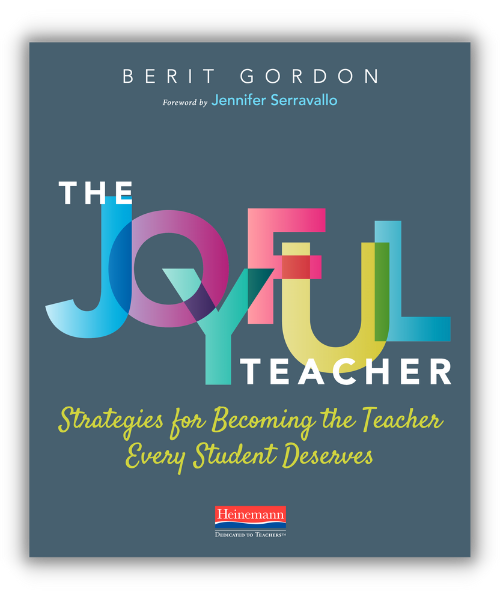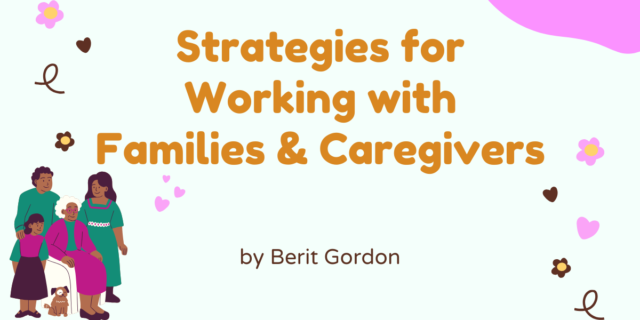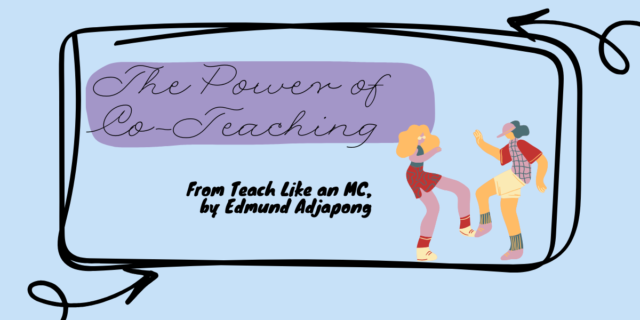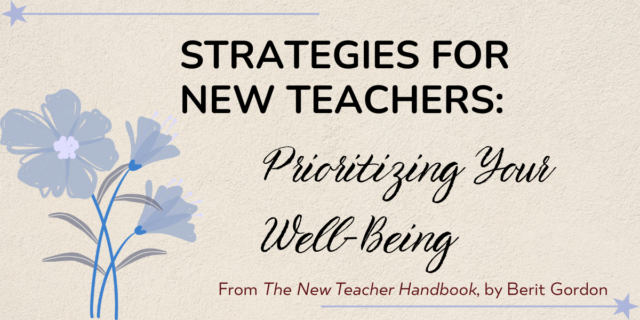
The following is an adapted excerpt from Berit Gordon’s The Joyful Teacher.
***
Talk and Collaboration are Important
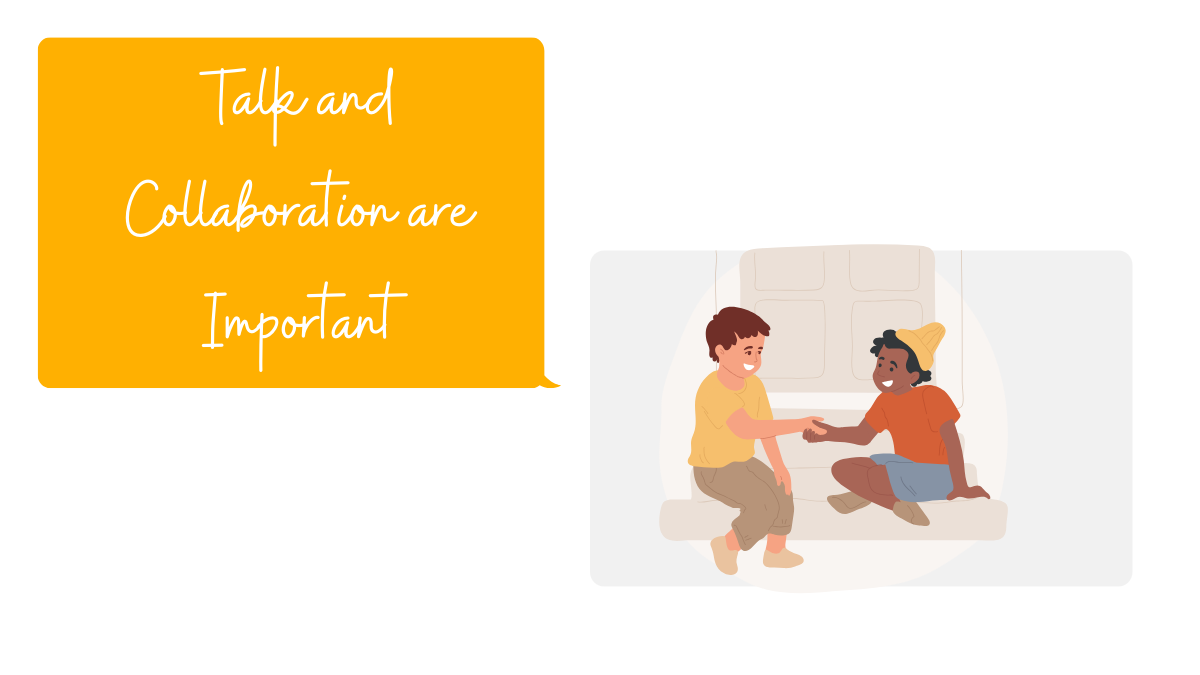 Gone are the days when talk is something teachers do while students listen. Fisher, Frey, and Quaglia (2018) remind us that talk “helps children focus their thinking, make their understandings known, and learn from others.” If talk can do all that, we need to make it happen—consistently. And we need to help all ages learn how to do it well.
Gone are the days when talk is something teachers do while students listen. Fisher, Frey, and Quaglia (2018) remind us that talk “helps children focus their thinking, make their understandings known, and learn from others.” If talk can do all that, we need to make it happen—consistently. And we need to help all ages learn how to do it well.
All state standards include a speaking and listening component. Talk is no longer an afterthought or an optional add-on feature of classrooms. It’s an essential skill and component of classroom instruction. The first way most of us learn is through talking and listening. Our brains are hardwired to learn through hearing speech and expressing speech. But often, classroom talk is heavily skewed toward teacher talk.
Centering Student Voices
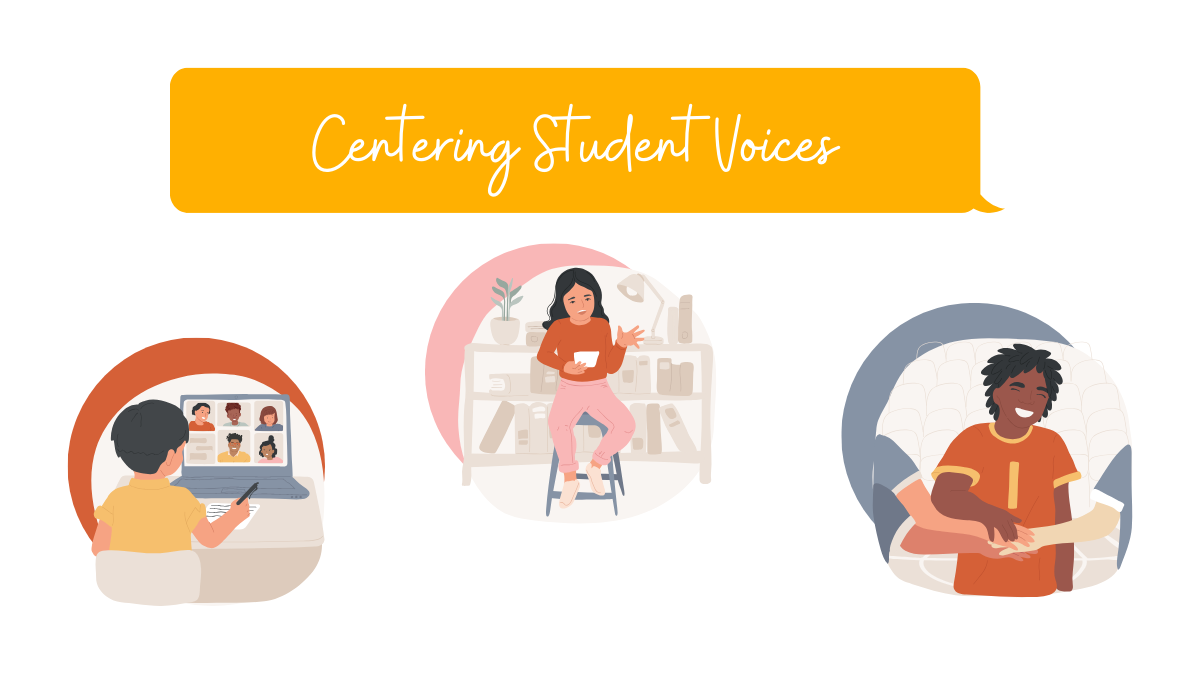 Research has shown that most of class talk is done by teachers, whose voices fill the room 50–80 percent of class time (Nunan 2003). We need to shift the balance so students’ voices are the ones that dominate our classrooms. But we shouldn’t stop there. After all, kids can be talking a lot, but it’s not necessarily talk that grows new thinking. As it stands, 90 percent of student talk tends to involve rote talk, recitation, and regurgitation (West n.d.). Let’s start infusing talk that is idea generating, not just recap.
Research has shown that most of class talk is done by teachers, whose voices fill the room 50–80 percent of class time (Nunan 2003). We need to shift the balance so students’ voices are the ones that dominate our classrooms. But we shouldn’t stop there. After all, kids can be talking a lot, but it’s not necessarily talk that grows new thinking. As it stands, 90 percent of student talk tends to involve rote talk, recitation, and regurgitation (West n.d.). Let’s start infusing talk that is idea generating, not just recap.
Talk is also an antidote to this age of screen worship. Any of us teaching teens have likely feared that devices are replacing one-to-one conversation, and we want our teens to head out into the world ready to communicate personally. The solution, Sherry Turkle says in her book Reclaiming Conversation, is to have them talk more (2016).
The following strategy is designed to remove obstacles for one and all to create a collaborative environment. Protecting kids with disabilities or who are learning English benefits all of our students. Think through design changes in how talk and collaboration are structured, so that everyone has the tools to succeed. Encourage students to see such tools as resources for everyone. If a discussion tool is student created, have everyone create the tool. Provide access to these tools and allow students to choose what works for them.
Remove Obstacles for One and All
- Personal portfolios for students to introduce themselves to new classmates, teachers, and groups:
- Portfolio can be in paper, audio, or video format.
- Have students share images, artifacts, work samples, notes from family/friends/previous teachers, accomplishments, favorite music/books/games.
- Include helpful information the student wants others to know such as any sensory issues, allergies, how to pronounce their names correctly, and so on.
- Search online for “all about me” printables that come ready-made with categories for students to fill out about themselves, their preferences, their hobbies, and more.
- Question jar filled with questions that students can ask one another during class discussion or group talk:
- Any subject: What is the most interesting part of today’s lesson? What is a tip you have for others? What is another way of explaining this?
- Math example: Can you share a real-world example?
- Language arts example: Which character is most interesting and why? What was the moment of truth in this book?
- Small groups of four or less. Any larger will limit the ability of hearing-impaired students to track conversations, and the smaller size will help increase everyone’s comfort level (and accountability) in taking part.
- Write key points for all to see. This will help hearing-impaired students to pick up on any missed discussion points, and it will help everyone follow changes in topic.
- Talking sticks are preprinted conversation starters.
- Use tongue depressors or sticks from the craft store and write questions that are appropriate for your students’ age group and environment. You can even involve your students and ask them questions that range from silly and fun to thought-provoking.
- “What’s your favorite breakfast?”
- “If your friend is sad, what do you do to make them feel better?”
- “What’s your idea of a perfect playground?”
- “What makes you laugh the most?”
- “What’s your favorite show/game/movie?”
- “What do you like most about yourself?”
- “Who is a celebrity you admire?”
- “If you had $100, what would you spend it on?”
- Give them supportive content. If your goal for a student is to help them talk, then give them content that they can add on to. This can sometimes be the needed step to speaking up.
- Hand the student a card or sticky note with the question and supportive content in advance so they feel comfortable chiming in. Later when they’re comfortable, you can remove the scaffold. For the whole class to try this, give everyone talking points in advance and let them practice the art of participating and listening without needing to worry about content.
- Peer tutoring—Provide the steps and script so they can easily work with a partner.
- Write out the lines that a peer tutor will say and practice it with them before they try it with a partner. For example, if peer tutors are working on math with flash cards:
- Show the first flashcard.
- “What is the answer?”
- If they get it, say, “You got it right!”
- If they don’t have the answer say, “Do you want to try again?”
- If they still don’t get it, show them the answer. Then say, “Try it again.”
- Put all the right answers in a pile.
- At the end, count the right answers and let your partner know the number.
- Write out the lines that a peer tutor will say and practice it with them before they try it with a partner. For example, if peer tutors are working on math with flash cards:
- Use tongue depressors or sticks from the craft store and write questions that are appropriate for your students’ age group and environment. You can even involve your students and ask them questions that range from silly and fun to thought-provoking.
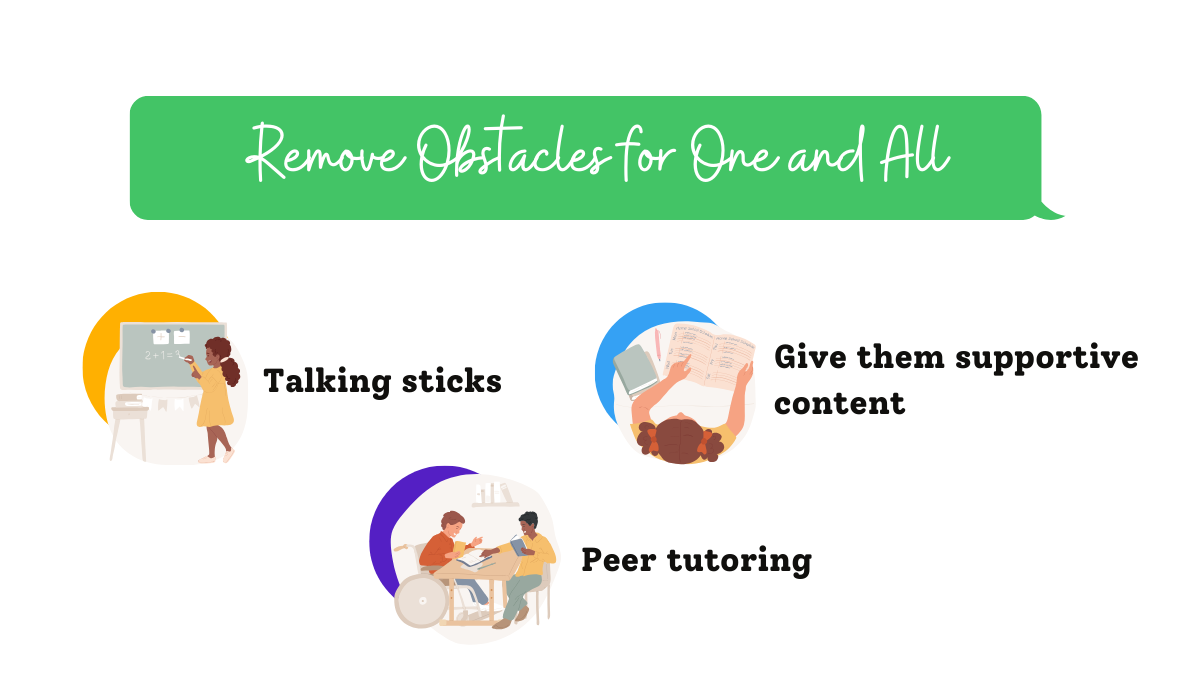 How do I know if this idea is working?
How do I know if this idea is working?
- A greater percentage of students readily participate in paired, group, and class discussion.
- You see students with individualized education plans as well as other students using the tools.
- You don’t need to coax students to talk—they are doing so on their own.
***
Listen to Berit Gordon and Erin Bailey discuss energizing educators on the Heinemann podcast.
The Joyful Teacher provides a structure to help K–12 teachers across all content areas reflect on their professional development needs, set goals that work, and access practical strategies that will help them meet those goals. You can take charge of your teacher growth and craft your own professional learning journey! You can purchase the book below.

Berit Gordon brings many years of teaching experience in New York City high schools as well as in the Dominican Republic to her literacy coaching work. She is a graduate and former instructor at Teachers College, Columbia University. Berit is the author of No More Fake Reading, which offers solutions for boosting stamina, joy, and skills among adolescent readers. Whether running workshops, leading literacy coaching sessions, or working in classrooms, Gordon strives to help students fall in love with reading and writing, and to lay the groundwork so they are experts at both for life. She lives with her family in Maplewood, New Jersey.
You can connect with her on her website at BeritGordon.com or on Twitter.
